
Birmingham Museum and Art Gallery (BM&AG) is a museum and art gallery in Birmingham, England. It has a collection of international importance covering fine art, ceramics, metalwork, jewellery, natural history, archaeology, ethnography, local history and industrial history.

Perrott's Folly, grid reference SP047862, also known as The Monument, or The Observatory, is a 29-metre (96-foot) tall tower, built in 1758. It is a Grade II* listed building in the Edgbaston area of Birmingham, United Kingdom.

The Ikon Gallery is an English gallery of contemporary art, located in Brindleyplace, Birmingham. It is housed in the Grade II listed, neo-gothic former Oozells Street Board School, designed by John Henry Chamberlain in 1877.

Aston Hall is a Grade I listed Jacobean house in Aston, Birmingham, England, designed by John Thorpe and built between 1618 and 1635. It is a leading example of the Jacobean prodigy house.

The Westside is a district of the city centre of Birmingham, England, which includes many new and planned buildings such as The Cube, Library of Birmingham, Ikon Gallery, Trident House and Regal Tower.

Birmingham City Council House in Birmingham, England, is the home of Birmingham City Council, and thus the seat of local government for the city. It provides office accommodation for both employed council officers, including the Chief Executive, and elected council members, plus the council chamber, Lord Mayor's Suite, committee rooms and a large and ornate banqueting suite, complete with minstrel's gallery. The first-floor's exterior balcony is used by visiting dignitaries and victorious sports teams, to address crowds assembled below. The Council House, which has its own postcode, B1 1BB, is located in Victoria Square in the city centre and is a Grade II* listed building.

Although Birmingham in England has existed as a settlement for over a thousand years, today's city is overwhelmingly a product of the 18th, 19th, and 20th centuries, with little surviving from its early history. As it has expanded, it has acquired a variety of architectural styles. Buildings of most modern architectural styles in the United Kingdom are located in Birmingham. In recent years, Birmingham was one of the first cities to exhibit the blobitecture style with the construction of the Selfridges store at the Bullring Shopping Centre.

Bournbrook is an industrial and residential district in southwest Birmingham, England, in the ward of Bournbrook and Selly Park and the parliamentary constituency of Birmingham Selly Oak. Before 2018 it was in Selly Oak Council Ward. Prior to what is commonly termed the Greater Birmingham Act, which came into effect on 9 November 1911, the Bourn Brook watercourse was the North Eastern boundary of Worcestershire, and the area was locally governed by the King's Norton and Northfield Urban District Council.
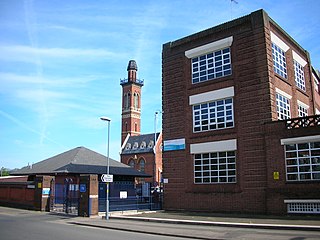
Edgbaston Waterworks lies to the east of Edgbaston Reservoir, two miles west of the centre of Birmingham, England.
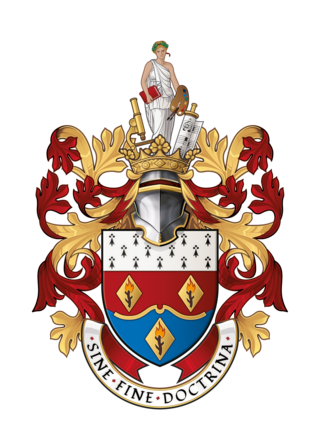
The Birmingham and Midland Institute, is an institution concerned with the promotion of education and learning in Birmingham, England. It is now based on Margaret Street in Birmingham city centre. It was founded in 1854 as a pioneer of adult scientific and technical education ; and today continues to offer arts and science lectures, exhibitions and concerts. It is a registered charity. There is limited free access to the public, with further facilities available on a subscription basis.

Abraham Follett Osler, known as A. Follett Osler, was a pioneer in the measurement of meteorological and chronological data in Birmingham, England.
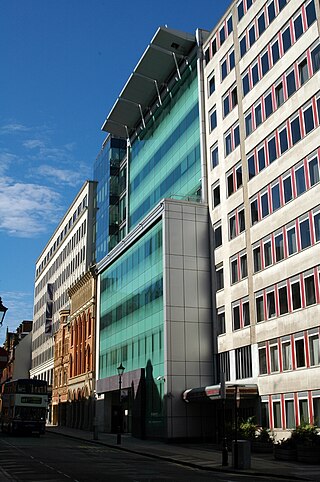
Edmund Street is a street located in Birmingham, England.
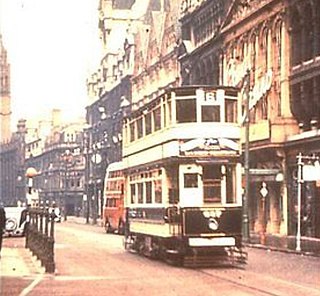
Birmingham Corporation Tramways operated a network of tramways in Birmingham from 1904 until 1953. It was the largest narrow-gauge tramway network in the UK, and was built to a gauge of 3 ft 6 in. It was the fourth largest tramway network in the UK behind London, Glasgow and Manchester.
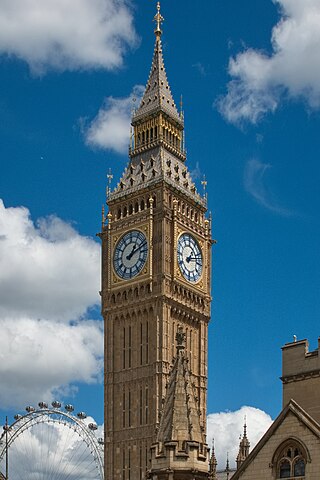
Big Ben is the common name for the Great Bell of the Great Clock of Westminster, and by extension to the clock tower and the clock itself. The Great Clock of Westminster is a striking clock with five bells. The clock tower is at the north end of the Palace of Westminster in London, England, and was originally known simply as the Clock Tower, but was renamed Elizabeth Tower in 2012 to mark the Diamond Jubilee of Elizabeth II.

Gilbertstone is a residential suburban area straddling the border of Yardley and South Yardley in Birmingham, West Midlands.
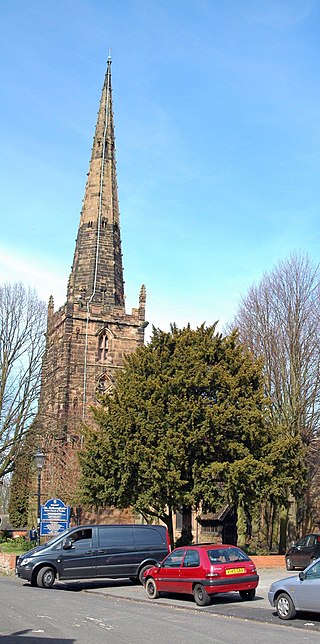
St Edburgha's Church is a parish church in the Yardley area of Birmingham, England. It is a Grade I listed building and a part of the Old Yardley conservation area.

Birmingham city centre, also known as Central Birmingham, is the central business district of Birmingham, England. The area was historically in Warwickshire. Following the removal of the Inner Ring Road, the city centre is now defined as being the area within the Middle Ring Road. The city centre is undergoing massive redevelopment with the Big City Plan, which means there are now nine emerging districts and the city centre is approximately five times bigger.

Paradise Street is a short street in the core area of Birmingham City Centre, in England. Paradise Street runs roughly from Victoria Square to Suffolk Street and Broad Street. The street existed in 1796 when a congregation gathered at a meeting hall for a sermon.
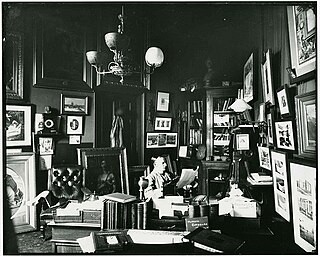
Whitworth Wallis was the first director of Birmingham Museum and Art Gallery. He was knighted in 1912.

Stratford House is a Grade II* listed house in the Highgate area of Birmingham, England. Dating from 1601, it is located near Camp Hill traffic island. It was built by Ambrose and Bridget Rotton whose initials are carved over the porch. There is also an insurance plate on the front. The house was originally located on a 20-acre (8.1 ha) farm owned by Ambrose, who kept sheep, oxen, cows and pigs.




















